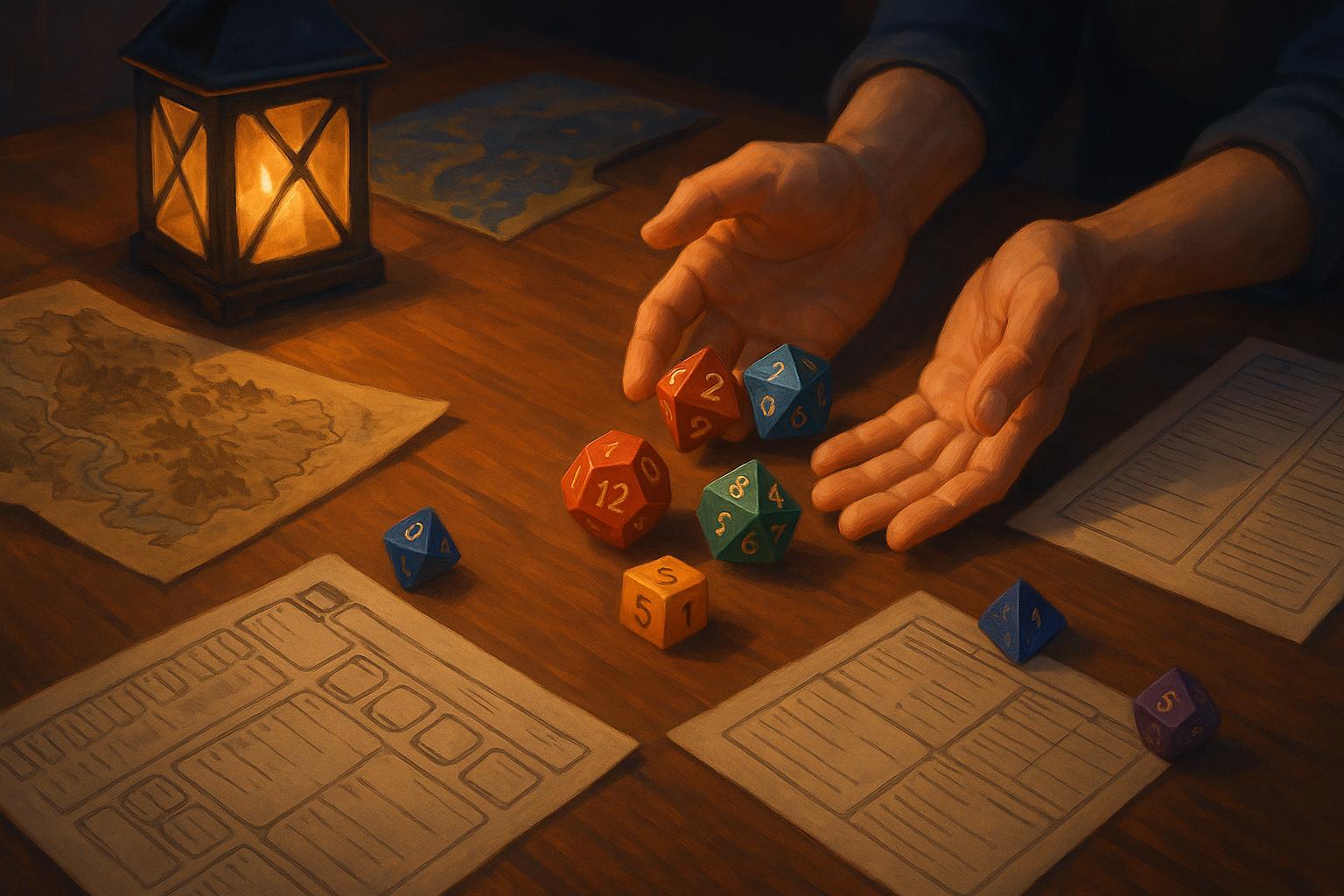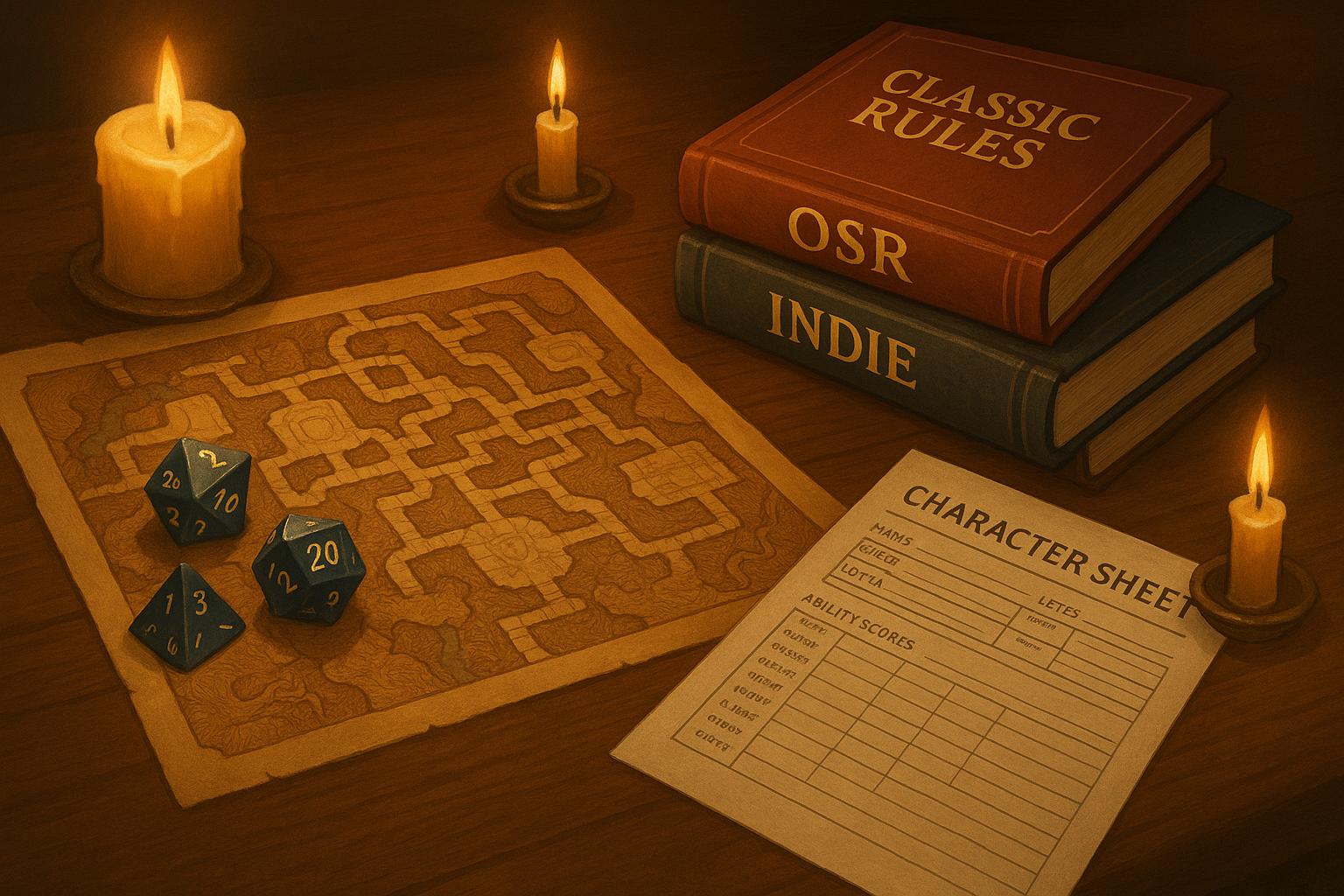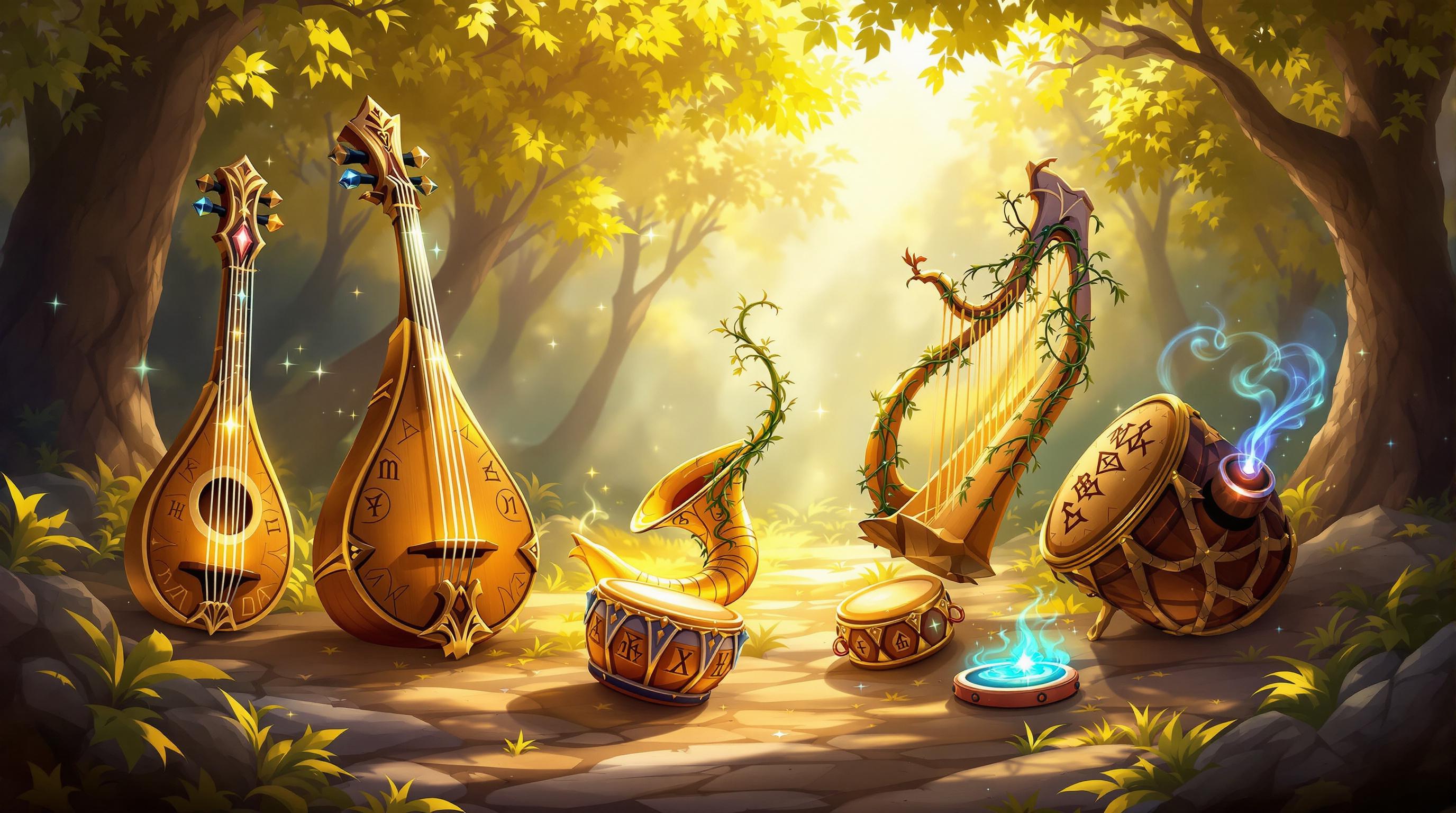Classic superhero RPG modules are pre-written adventures for tabletop games that let players step into the shoes of powerful heroes. These modules, popularized from the 1980s to early 2000s, combine thrilling battles, intriguing plots, and unique game mechanics that mimic comic book storytelling. Here’s a quick summary of the key points:
- What They Are: Ready-made adventures with plots, villains, and challenges tailored for superhero-themed RPGs.
- Why They Matter: They shaped superhero RPG storytelling, balancing action, roleplaying, and investigation while influencing modern game design.
- Popular Systems:
- Marvel Super Heroes (FASERIP): Known for its simple mechanics and iconic modules like Secret Wars.
- Champions: Focused on deep customization with point-based systems.
- DC Heroes: Featured a unified framework for all actions using its MEGS system.
- Legacy: These modules introduced mechanics and storytelling techniques that continue to impact RPGs today.
Want to dive deeper? Keep reading to explore the golden age of superhero RPGs, iconic modules, and tips to get started.
Marvel Superheroes Role Playing Game (RPG) - Nostalgia Knowledge - Marvel FASERIP
The Golden Age of Superhero RPG Modules
From the 1980s to the early 2000s, superhero RPGs experienced what many consider their golden age. This was a time when the genre surged in popularity, becoming the second most beloved role-playing category after fantasy by the late 1980s. During this period, game designers introduced groundbreaking mechanics and storytelling techniques that continue to influence RPGs today.
Key Systems and Publishers
Three standout systems dominated the superhero RPG scene during this era, each bringing its own flavor to the table.
Marvel Super Heroes (FASERIP), developed by TSR, became a cornerstone for licensed superhero games. Its FASERIP system - standing for Fighting, Agility, Strength, Endurance, Reason, Intuition, and Psyche - used descriptive ranks like Feeble and Unearthly to define characters’ abilities. The focus was clear: fun over realism. As ClassicMarvelForever.com put it:
"The Classic Marvel Roleplaying Game is not about hard facts or real world conversion specifics; it is all about having fun."
The Advanced Set later expanded the game, adding more ranks and powers, giving players even more creative freedom.
Champions, published by Hero Games, brought something different with its comprehensive point-based system. This approach gave players the tools to customize their heroes down to the smallest detail by allocating points strategically. Over time, Champions evolved into the backbone of the broader Hero System, setting a new standard for character creation.
DC Heroes, from Mayfair Games, introduced another point-based system tailored to DC’s legendary characters. Its release coincided with the Crisis on Infinite Earths storyline, making it a hit among comic book enthusiasts. Like Marvel Super Heroes, the game let players step into the shoes of iconic characters or create their own, offering both familiarity and creative freedom.
Other influential titles included Villains and Vigilantes, which borrowed mechanics from Dungeons & Dragons, and Superhero: 2044, an early adopter of point-buy systems that inspired later games like Champions.
The legacy of these systems is undeniable. As game designer Steve Kenson reflected:
"It's a testament to the game's longevity that it still has enthusiastic fan support on the Internet and an active play community more than a decade after its last product was published. Even more so that it continues to set a standard by which new superhero roleplaying games are measured. Like modern comic book writers and artists following the greats of the Silver Age, modern RPG designers have a tough act to follow."
These games not only shaped how superhero stories were told in RPGs but also laid the groundwork for future innovations.
Design Trends of the Era
The golden age saw the rise of several design trends that left a lasting mark on superhero RPGs.
Point-buy systems became increasingly popular, with Champions leading the charge. These systems allowed for meticulous customization, letting players craft heroes with precision and balance. This level of control appealed to those who wanted their characters to feel both unique and mechanically sound.
Initially, most games focused heavily on combat, but by the 1990s, there was a shift toward richer character development. Systems began incorporating elements like random power rolls and detailed origin stories, echoing the narrative style of Silver Age comics. These mechanics encouraged players to create characters with deeper backstories and connections to the larger game world.
Licensed properties played a significant role in shaping this era. Games like Marvel Super Heroes and DC Heroes proved that players loved stepping into the worlds of their favorite comic book characters. However, licensing restrictions sometimes limited creative storytelling and mechanics, creating a unique challenge for designers.
These trends mirrored changes in both tabletop gaming and comic book culture. Even today, resources like the TTRPG Games Directory (https://ttrpg-games.com) highlight how these foundational ideas continue to influence modern superhero RPGs. This era not only redefined the genre but also set the stage for exploring and running classic modules, which will be discussed in the next section.
Classic Superhero RPG Modules and Their Features
The golden age of superhero RPGs brought us some unforgettable modules, each showcasing unique mechanics and storytelling styles. Let’s dive into a few standout examples from different systems and see what made them so influential.
Marvel Super Heroes (FASERIP) Modules
Marvel Super Heroes gained its reputation thanks to the FASERIP system, which was praised for its straightforward yet effective mechanics. At the heart of the system was a universal table that paired character attributes with percentage dice rolls to determine FEAT outcomes, categorized into white, green, yellow, and red results. Attributes ranged from 1 to 100, with "Typical" characters (scores of 5–7) having a baseline 50% chance of success. Talents added a +1 column shift, offering a slight edge in specific areas of expertise.
"The trick to understanding FASERIP is that it's secretly a resource-allocation based system where FEAT rolls just give you a bit of a break, depending on your natural abilities." – TristramEvans, Administrator/Moderator, RPG Pub
One of the most iconic modules, Secret Wars, stood out for its sandbox-style gameplay and random events, breaking away from the usual linear narrative. Many game masters enhanced the experience by doubling Karma rewards and tailoring the module for more open-ended play. This adaptability set a precedent for the flexible designs later seen in other systems, like Champions.
Champions Modules
Champions modules took a different path, focusing on deep customization through a point-based system. Players could create unique abilities by defining their effects, offering endless possibilities for character concepts. A hallmark of this system was the ability to separate a power’s mechanics from its appearance, allowing players to design both function and flair independently.
"You can model almost anything with the combination of mechanics and special effect." – GTHolkan
Progression in Champions was tied to earning character points through adventures, which could then be spent to improve abilities or remove disadvantages. The game’s 3D6 roll-under mechanic kept the action flowing, while detailed systems for secret identities, costumes, and villain creation enriched the storytelling. Reviewer Rick Swan highlighted the game’s legacy:
"In addition to being one of the oldest superhero RPGs, Champions is easily the biggest and arguably the best." – Rick Swan
However, Swan also noted that the combat system’s complexity - filled with numbers, formulas, and tables - could overwhelm new players. Successful modules struck a balance between mechanical depth and accessibility, a balance that continues to inspire modern superhero RPGs.
DC Heroes Modules
DC Heroes carved out its own niche with the MEGS (Mayfair Exponential Game System), which unified all actions, from combat to social interactions, under a single framework. This approach balanced the physical, mental, and mystical aspects of heroism.
The system featured a logarithmic scale where each Attribute Point doubled the effectiveness of the previous one (e.g., Strength 4 was four times stronger than Strength 2). While average human characters typically had 2 APs in each attribute, the system could handle cosmic-level heroes with much higher values.
A standout mechanic was the Hero Points system, where players spent points strategically to influence outcomes. This created a layer of resource management that encouraged careful planning. DC Heroes also excelled at weaving character backstories and subplots into the main narrative, supported by detailed rules for wealth, gadgets, and equipment creation. Ernest Mueller of RPGnet remarked:
"It's interesting to me that the game evolved only a little from edition to edition, much like BRP. If the core is simple and elegant, there's only so much screwing around you can do." – Ernest Mueller, Reviewer, RPGnet
The system’s Action Table and Result Table provided consistent mechanics across all types of challenges, from social conflicts to superhuman battles. This unified design ensured that every aspect of heroism felt equally important, leaving a lasting mark on the genre.
These classic modules remain influential in shaping modern superhero RPGs. Platforms like TTRPG Games Directory provide an excellent resource for exploring these foundational adventures and their impact on the genre. Each system brought something unique to the table, enriching the portrayal of superhero action and storytelling in role-playing games.
sbb-itb-b8b00a5
How to Get Started with Classic Superhero RPG Modules
Dive into the world of classic superhero RPG adventures with these straightforward steps. Whether you're an experienced game master eager to explore older systems or new to the genre and curious about its origins, these tips will help you get started. The key? Tapping into the right resources - both local and digital.
Where to Find Classic Modules
You can find classic superhero RPG modules in a few key places. Local gaming stores often stock vintage materials, and online marketplaces like eBay are treasure troves for harder-to-find items. If you're specifically after Marvel Super Heroes materials, check out Classic Marvel Forever. They offer downloadable versions of essential texts like the Advanced Players Handbook, Advanced Judges Handbook, Ultimate Powers Book, and Realms Of Magic, originally published by TSR between 1984 and the early 1990s.
Another excellent resource is the TTRPG Games Directory. It provides detailed listings of superhero RPGs, breaking down game mechanics, themes, and unique features to help you find a system that suits your group. Plus, joining online communities centered around classic systems can connect you with advice, shared materials, and passionate players who love these games as much as you do.
Tips for Running Classic Modules
Once you've got your hands on a module, here’s how to bring it to life. Many older RPG systems lean on more intricate rules, so you might need to adjust them for modern players who prefer narrative-driven or simplified mechanics. A good starting point? Try running a solo campaign to get a feel for the system and experiment with character creation to understand the available powers.
For group play, keep things manageable by starting with a small party. Focus on the core elements that make these modules exciting - like thrilling superhero tropes - rather than sticking rigidly to every rule. Clear communication is key, especially during tactical encounters where teamwork shines.
Running a one-shot adventure can be a low-pressure way to test the system and build your confidence. Watching actual play sessions online can also give you a sense of how the game flows and prepare you for potential challenges.
Lastly, don’t be afraid to mix things up. You can adapt classic adventures, like those inspired by the 2003 Marvel Universe Roleplaying Game, to incorporate modern design elements while keeping the charm of older mechanics. Be flexible, lean into collaborative storytelling, and use dynamic rulings as opportunities to create memorable moments for your players.
The Legacy of Superhero RPG Modules
Classic superhero RPG modules left a lasting mark on tabletop gaming, reshaping the medium far beyond their comic book roots. These games didn’t just bring the thrill of superhero adventures to the table - they fundamentally changed how RPGs are designed and played.
The mechanical breakthroughs introduced by these games laid the groundwork for many modern systems. Innovations like West End Games' dice pool mechanics in Star Wars RPG, the opposed d10 rolls in Cyberpunk RPG, and the refined Storyteller dice pool system in Vampire: The Masquerade became blueprints for countless titles that followed. These advancements weren’t just technical tweaks - they opened doors to richer, more dynamic gameplay experiences.
But the legacy of these modules goes beyond mechanics. Their storytelling introduced complex moral dilemmas and heroic arcs, giving players and game masters the tools to craft intricate, meaningful narratives. By blending multiple genres, these games offered a flexible framework that enhanced both character creation and world-building. Players could step into the shoes of heroes, battling the forces of evil, while creating original stories within established universes.
One of their greatest strengths was how they encouraged creativity through straightforward systems. These modules invited players to dive into worlds of high-stakes action and meaningful choices - qualities that resonate with gamers even today.
The impact of these classic superhero RPGs can still be felt in modern tabletop gaming. They demonstrated that RPGs could be both mechanically engaging and narratively deep, setting the bar for character creation, world-building, and collaborative storytelling. For anyone exploring the evolution of tabletop RPGs, these modules remain essential examples of how the medium can deliver both entertainment and artistic depth.
FAQs
What are the main differences between the Marvel Super Heroes, Champions, and DC Heroes RPG systems?
The Marvel Super Heroes RPG, Champions, and DC Heroes RPG each bring their own flavor to the tabletop role-playing world, catering to a variety of player styles and preferences.
The Marvel Super Heroes RPG keeps things simple with its universal resolution table. This streamlined approach makes it easy to learn and play, capturing the energetic, colorful essence of comic book adventures. It’s perfect for newcomers or anyone who loves fast, story-driven gameplay.
On the other hand, Champions is all about detail. Its character creation system is incredibly intricate, allowing players to craft heroes from the ground up using a point-based system. This level of customization is a dream for experienced players who enjoy diving into strategy and tailoring every aspect of their characters.
Meanwhile, DC Heroes RPG takes a more structured route. It uses chart-based mechanics for combat and abilities, offering a balanced and methodical gameplay style. While it might take a bit longer to play through, it’s a great fit for those who enjoy precise mechanics and in-depth character interactions.
Each system shines in its own way: Marvel delivers simplicity and narrative flair, Champions offers unmatched customization, and DC Heroes provides a structured, balanced experience.
How can players update classic superhero RPG modules to match modern gaming styles?
Players have the opportunity to refresh classic superhero RPG modules by weaving in elements that align with today’s gaming preferences. For instance, adding character-driven storytelling and moral dilemmas can deepen engagement and make campaigns feel more relevant to modern players. Streamlining overly complex mechanics into simpler systems allows the focus to shift toward narrative and character arcs.
Incorporating digital tools for tasks like character tracking or facilitating virtual play can also make these modules more accessible, especially for online groups. Updating the settings to reflect current social themes or nods to popular culture can further draw players into the story, making the experience feel both modern and immersive.
How did classic superhero RPG modules shape the evolution of modern tabletop RPGs?
Classic superhero RPG modules had a huge impact on the evolution of modern tabletop RPGs. They brought in richer storytelling, more complex character development, and fresh gameplay ideas. Take Lands of Doctor Doom or The Island of Dr. Destroyer - these modules went beyond simple combat scenarios. They introduced layers of political intrigue and moral gray areas, making the experience far more engaging.
This shift toward narrative-driven gameplay set the stage for today’s RPGs, where immersive and personalized storytelling takes center stage. The focus on character customization and unique power dynamics in those early modules also left a lasting mark. Many modern RPG systems now prioritize giving players the tools to craft distinct characters and explore their stories in meaningful ways.


